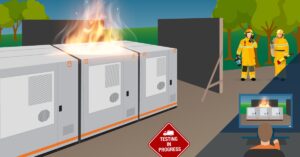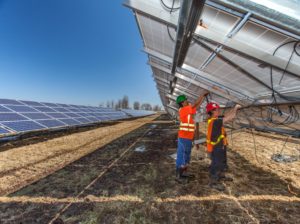How do we solve the fire safety problem of household energy storage?
Household energy storage has become a key player in changing how we use and consume electricity. The continued adoption of these new energy technologies highlights the need for rigorous attention to fire safety within these systems. This guide will tell you how to effectively avoid and prevent the existence of these fire protection problems, emphasizing the balance between innovation and safety. Our goal is to provide a strong understanding of why fire safety is critical to home energy storage.
The foundation for safe household energy storage
The foundation of any robust household energy storage system lies in the wise selection of its components. Homeowners must understand the intricacies of batteries, inverters, and related components with a keen eye for quality and safety.
Choosing the right components for a safe household energy storage system is crucial. Implement a robust battery management system (BMS) to monitor and manage battery conditions to ensure reliable operation. Choose an inverter that meets safety standards and provides efficient DC-to-AC conversion with voltage regulation. Industry-standard battery packaging and enclosures that provide fire and impact resistance must also be given priority. There are also other components, such as a temperature control system to prevent overheating, improve overall safety, and more. We need to know how to validate component selection through safety certification and comply with international regulations to ensure that household energy storage systems are safe and compliant and that fire hazards will not occur.
Building fireproof energy storage infrastructure
Of course, fire safety for home energy storage goes beyond component selection and covers critical areas of installation practice. We start by finding a non-combustible location that is well-ventilated and away from flammable materials. Install fire barriers and comply with local building codes to avoid potential fires. Implement insulation to mitigate heat transfer and reduce the risk of fire. Install smoke and heat detectors connected to alarm systems for early detection of fires. Includes specialized fire suppression systems, such as fire extinguishers or automatic fire extinguishing devices, customized for the storage area. Maintain appropriate spacing between energy storage components to minimize heat build-up. Regularly inspect and test all fire safety measures to ensure they function correctly. Building fire protection infrastructure involves these aspects.
Effective thermal management prevents household energy storage from overheating!
Effectively managing heat is critical to preventing household energy storage systems from overheating. Robust thermal management systems include cooling elements such as fans, radiators, or liquid cooling systems that dissipate excess heat generated during operation. There is also the ability to use temperature sensors and control mechanisms to monitor and regulate system temperatures within safe limits. Choose energy storage components and conductive materials with high thermal stability to enhance heat dissipation. Check and clean cooling elements regularly to maintain their efficiency. Overall, management systems are critical to the safe and efficient operation of home energy storage, preventing risks associated with overheating.
Routine maintenance and monitoring
A routine inspection schedule is needed in our homes, including checking components for any signs of wear, corrosion, or abnormal behavior. Monitor battery performance with other diagnostic tools, such as external meters, to ensure optimal charge and discharge cycles. Regularly update and calibrate control systems to maintain efficiency and responsiveness. Implement a robust monitoring system that provides real-time data on energy consumption, storage levels, and overall system health. Update firmware and software regularly, and if possible, hire professional technicians to perform regular maintenance and proactively solve potential problems. Only in this way can the safety of their household energy storage system be ensured.
Be prepared for emergencies!
Having relevant and effective contingency plans is critical to ensuring fire protection issues arise. Clear procedures for potential hazards such as power outages or system failures. Users can be educated on emergency plans, emphasizing safe shutdown procedures and evacuation routes. Install backup power sources such as generators or uninterruptible power supplies to ensure critical functions can be maintained during emergencies. Regularly test and maintain backup systems to ensure their reliability. Periodically review and update emergency plans to account for system configuration or home structure changes. A well-prepared contingency plan ensures the safety and resilience of your home energy storage system in unforeseen circumstances.
Establish a safe energy storage environment!
Through such a safety guide, we want to convey to everyone to be responsible for the environment and their safety. Firefighting problems, large and small, occur in different places every year. We at MK Energy hope that every user using our home energy storage system can have a safe environment.



